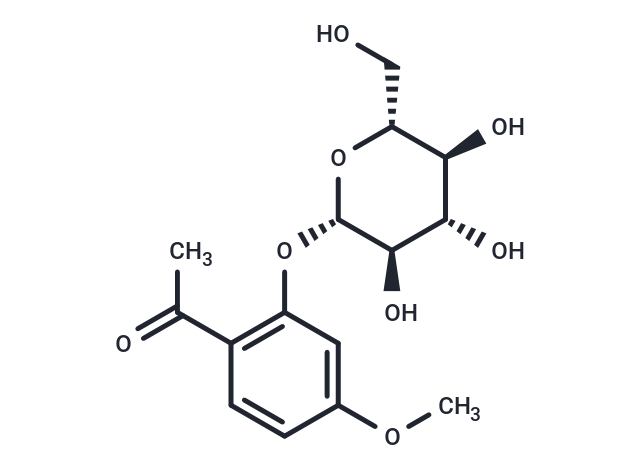Shopping Cart
- Remove All
 Your shopping cart is currently empty
Your shopping cart is currently empty

Paeonoside, found in P. suffruticosa, is biologically active and can promote wound healing and migration during osteoblast differentiation. Paeonoside has certain antidiabetic activity and may prevent sepsis and death from sepsis. Paeonoside has no cytotoxic effect on preosteoblasts of MC3T3-E1 cells, significantly restores the wound area and promotes cell migration and alkaline phosphatase (ALP) staining and its activity in a dose-dependent manner.

| Pack Size | Price | Availability | Quantity |
|---|---|---|---|
| 1 mg | $117 | In Stock | |
| 5 mg | $293 | In Stock | |
| 10 mg | $429 | In Stock | |
| 25 mg | $653 | In Stock | |
| 50 mg | $888 | In Stock | |
| 100 mg | $1,180 | In Stock | |
| 1 mL x 10 mM (in DMSO) | $289 | In Stock |
| Description | Paeonoside, found in P. suffruticosa, is biologically active and can promote wound healing and migration during osteoblast differentiation. Paeonoside has certain antidiabetic activity and may prevent sepsis and death from sepsis. Paeonoside has no cytotoxic effect on preosteoblasts of MC3T3-E1 cells, significantly restores the wound area and promotes cell migration and alkaline phosphatase (ALP) staining and its activity in a dose-dependent manner. |
| In vitro | Paeonoside (0.1-100 μM, 24 h) exhibited no cytotoxicity towards MC3T3-E1 pro-osteoblasts cells, even at concentrations ranging from 0.1 to 100 μM, when treated for 24 hours.[1] When MC3T3-E1 preosteoblasts were induced to differentiate using osteogenic supplement (OS) medium, treatment with PASI (1-30 μM, 24 h) significantly enhanced wound area restoration and facilitated cell migration in a dose-dependent manner. Furthermore, PASI demonstrated a dose-dependent promotion of alkaline phosphatase (ALP) staining and activity.[1] |
| Molecular Weight | 328.31 |
| Formula | C15H20O8 |
| Cas No. | 20309-70-0 |
| Smiles | O(C1=C(C(C)=O)C=CC(OC)=C1)[C@@H]2O[C@H](CO)[C@@H](O)[C@H](O)[C@H]2O |
| Relative Density. | 1.414 g/cm3 (Predicted) |
| Storage | store at low temperature | Powder: -20°C for 3 years | In solvent: -80°C for 1 year | Shipping with blue ice. | ||||||||||||||||||||||||||||||
| Solubility Information | DMSO: 22.5 mg/mL (68.53 mM), Sonication is recommended. | ||||||||||||||||||||||||||||||
Solution Preparation Table | |||||||||||||||||||||||||||||||
DMSO
| |||||||||||||||||||||||||||||||

Copyright © 2015-2025 TargetMol Chemicals Inc. All Rights Reserved.